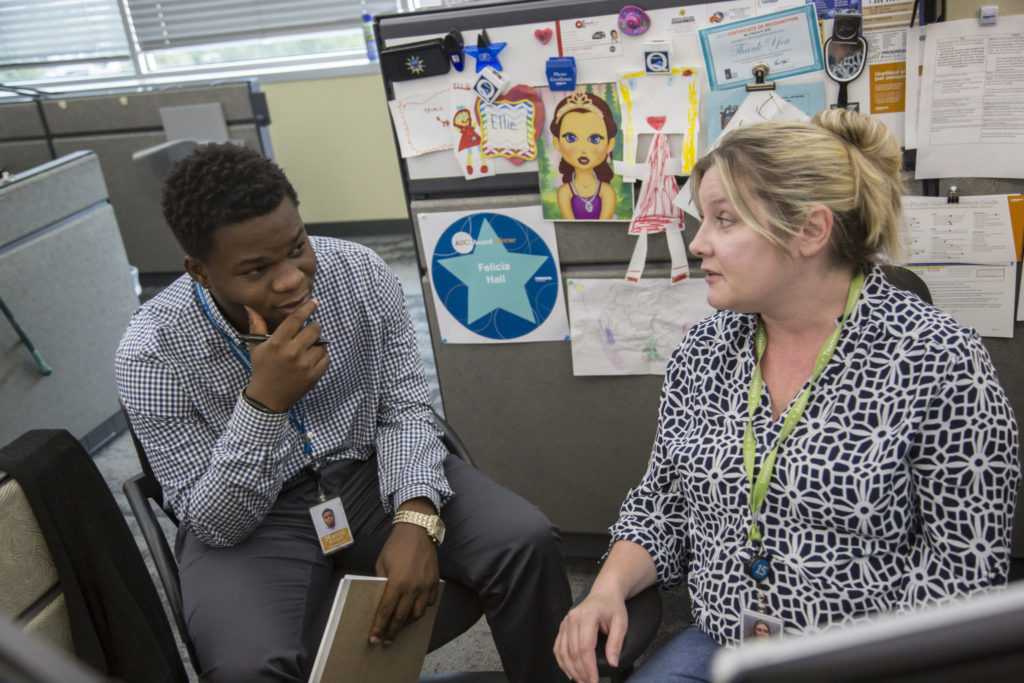By Mandana Nakhai | CareerWise Development Manager
The economic impacts of the Coronavirus pandemic have been far reaching, but it’s low-wage jobs that have been hardest hit by layoffs and furloughs. It’s a dynamic that weakens the already tenuous grasp on stability held by the people—including youth—with the least resources. Youth apprenticeship could play a part regaining skills and jobs necessary for an inclusive, equitable recovery.
While we can’t yet predict precisely what jobs will come back and what companies’ needs will be when they’re able to start hiring, improved private-sector capacity for training and upskilling will be key to our economic recovery. And done right, it will not only put people back to work, but on career paths with upward mobility while simultaneously addressing issues in America’s talent pipelines that plagued corporate productivity before Coronavirus crystalized the skills gap.
The timing—and market conditions—of a young person’s entrance into the workforce cannot be understated. Despite the common perception of youth as a time of unburdened exploration, those first steps in the workforce actually hold incredible power to shape future outcomes. When young people are forced to start careers during a downturn, their wages, opportunities and confidence can be negatively affected for a lifetime, according to one recent New York Times article. Research from Stanford even showed that “recession graduates” had higher death rates by the time they reached middle age.
 Importantly, the Stanford findings indicate that those with only a high-school education are most at risk for long-term income losses. Data from the 2008 recession and the first few months of the current crisis together paint an emerging picture of a group of 13 million young workers in low-wage jobs that have either at risk disappeared or are at higher risk of being cut, more than half of whom do not not have the college degree necessary to transition into higher-skilled and higher paying work. Twenty seven percent of these approximately 7 million young workers are Hispanic, and 16 percent are black, suggesting a disproportionate allocation of low wage work to young people of color, and subsequently, of long-term loss of income and career growth resulting from the timing of their first jobs.
Importantly, the Stanford findings indicate that those with only a high-school education are most at risk for long-term income losses. Data from the 2008 recession and the first few months of the current crisis together paint an emerging picture of a group of 13 million young workers in low-wage jobs that have either at risk disappeared or are at higher risk of being cut, more than half of whom do not not have the college degree necessary to transition into higher-skilled and higher paying work. Twenty seven percent of these approximately 7 million young workers are Hispanic, and 16 percent are black, suggesting a disproportionate allocation of low wage work to young people of color, and subsequently, of long-term loss of income and career growth resulting from the timing of their first jobs.
Youth who are still in high school, while not counted in this data, also face increased risks. Last year almost 40 percent of high-school graduates did not go on to college. Students graduating this year and next, who planned to attend college, must now consider how their experience will be affected by remote learning (and by the burden of higher education debt in a perilous job market). And those who were not going to college enter a job market with fewer opportunities even for low-skill work.
Before the pandemic, the skills gap was being addressed by educators and industry alike. One analyst suggested that a “merger” of education and industry was on the way, marked by closer collaboration between education and employers—and ultimately a shift toward employers becoming the educators themselves. Just before the pandemic hit, he noted a few examples of what this merging, termed “Employer U” could look like: United Airlines’ acquired a flight school to address the pilot shortage, and Arizona State University and State Farm partnered on an initiative that will help high school and community college students access skills training.
Apprenticeship is another type of industry/education partnership and alternative pathway that helps get people working, in critical roles, without the cost and time of an entire degree. Large-scale job programs are helpful for keeping families afloat and staving off some of the deleterious mental health effects of unemployment, but apprenticeship goes a step further by ensuring that participants progress toward mastery of relevant skills while they earn income.
Apprenticeship shifts upskilling from K-12 and higher education, which can’t always train to employers’ exact needs, to industry. Like the examples noted above, apprenticeship requires employer investment, but the employers who pay for it, like United and State Farm, know that an investment in people and skills today will fuel their success tomorrow. And, because apprentices are working while they are learning on the job, employers can ultimately expect to make a return on their productivity.
Prior to the pandemic there was growing focus on creating more career opportunity for more people to create a more equitable economy. Today, it’s an imperative. Apprenticeship could be the bridge between industry and education that drives innovation. It’s a model that should be part of a deliberate recovery that prioritizes inclusivity and economic mobility to help close the existing gaps of economic disparities.